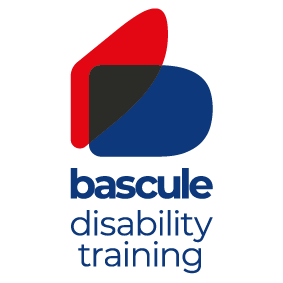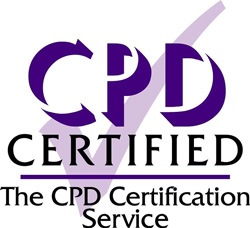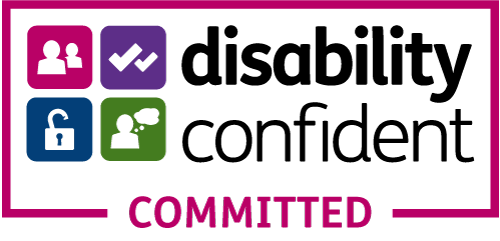The Information Game - Understanding Disability in Your Organisation

There's a well-known old saying that “You don’t know what you don’t know.” and recently, I’ve been thinking about how relevant this is when it comes to assessing your workplace culture.
Many of the organisations I’ve worked with in the past have had a relatively positive outlook on their own ability to support staff with disabilities, but when I ask how they ‘know ‘- they are often going on a hunch, assumption or guess- and very rarely do they have strong evidence.
The truth is, without the right information and insights, it’s easy to overlook barriers that may be limiting accessibility, opportunities and support for people with disabilities in your workplace. The good news is, there is a wealth of information, that is practically waiting under your nose.
By putting a few procedures in place, monitoring and surveying staff, and checking in regularly on your workforce, you can actually tell a lot about your organisational culture, what is working, what isn’t, and this information can really help you to drive meaningful change.
Here are some key areas where businesses can gather insights into their cultural approach to disability.
- Survey your people
At Bascule – we love a survey! They are one of the best ways to gain an understanding of how disability-inclusive your workplace really is. It goes without saying that the best results you get are when you make the survey anonymous, or you use a third party to gather the information for you, allowing for staff to genuinely and truthfully open up.
These surveys can give you all kinds of information and can even allow you to assess how staff feel about sharing the fact that they may have a hidden disability. It is also important to explain WHY you are asking these questions, that you want to make the organisation better and that these are not stats that are going to sit in a drawer for years. The knowledge of how comfortable staff feel in doing this is a general yardstick for where you currently stand on disability from a cultural perspective. For example, if feedback tells you a high percentage of staff are not likely to feel comfortable ‘disclosing’, (for want of a better word!), then you are likely to be facing issues around staff perceptions of disability, cultural approaches, faith in support from senior staff members and so on.
You can also delve into gaining an understanding about how well reasonable adjustment is working, equal opportunities for career progression are, and how confident staff feel about working with, interacting with and managing colleagues with a disability. You can use the feedback to shape training strategies, policies, managerial development, recruitment approaches and so much more.
- Who’s Applying and Who’s Getting Hired?
This one’s very important! Not only does research in this area give you an understanding of how many people with disabilities you may have already employed- it also gives you an opportunity to consider your existing hiring processes and whether they are putting up barriers for people with disabilities.
It’s quite common for organisations to overlook their shortcomings, only to believe that other factors are the result of receiving low numbers of disabled applicants.
This was proven in research from the Valuable 500, when almost half of businesses surveyed said that a key barrier to the recruitment and retention of employees with disabilities, is the lack of candidates. Puzzling when you consider the number of people with disabilities in the UK looking for work and the existing employment gap being 28%.
This demonstrates the issues businesses may have in recruitment, that they are acutely unaware of. The way to eliminate this is to collate data and analyse our recruitment efforts to ensure we don’t adopt the easy option of thinking, ‘it’s them, not us’.
Especially when you look at another survey from Virgin Media and Scope (‘Work with Me’) where disabled people stated that when applying for jobs, only half of their applications result in an interview, compared with 69% for non-disabled applicants.
So, what should we be monitoring? Well, for starters, consider the number of people with disabilities that actually apply. Is the number disproportionate to those without disabilities? Is there a reason? How accessible are advertisements? Where do the job ads go- and are there accessible routes to these places? Are websites accessible? Etc, etc.
Don’t forget to look at other information, such as whether hidden disabilities are shared in the recruitment stages, or whether they are in the post recruitment phase. You can collate data to assess whether disabled applicants are progressing throughout all stages of the hiring process at the same rate as non-disabled applicants. Are they largely unsuccessful in the interview? You can consider interview processes and whether reasonable adjustments are being requested and effectively provided during interviews.
Findings here will prompt you to reassess your processes, job descriptions, and interview methods. It can prompt you to roll out training for those recruiting, and assess whether unconscious bias issues may need addressing. And the results? An abundance of new, untapped, talented applicants. If you are still struggling, you can work with Inclusive Boards who can reach out to their networks for you.
- Understanding your existing workforce, and addressing secrecy
Here’s an interesting stat- Almost two thirds (63%) of businesses did not know how many people in their organisation identify as disabled. Of course, it isn’t compulsory to monitor this information, but keeping an eye on numbers will tell you a lot.
Now, disability disclosure is completely voluntary, and many employees with hidden disabilities may always choose to keep them a secret. However, providing good support, onboard training, manager training, encouraging open conversations and fostering a culture of trust can have a significant impact on reducing secrecy.
I have trained many large companies with incredibly small percentages of disabilities and explained that it’s extremely likely that there are a lot more people in a business that large, that haven’t made their disability known.
Ways to change that can be by encouraging disclosure through internal campaigns (using story telling/case studies) and introducing disability networking groups. Opportunities to access reasonable adjustment should be simple and straightforward, as should confidential, and supportive channels for disclosure.
Having employees represented at all levels, especially leaders, also encourages more people to be open about their disability, and brings down secrecy, but one of the most effective ways of improving disclosure is through training. In disability training sessions, I often see staff members talk openly about their disability amongst colleagues for the first time – why? Because it’s become very apparent that their employer has chosen to make a step towards creating a supportive environment for them.
Try all of the above- and monitor your numbers. Those hiding their disability are likely to feel so much more comfortable revealing them, allowing them to bring their best selves to work.
- Retention and Exit Surveys: Why Are Disabled Staff Leaving?
Keeping an eye on retention levels can reveal a lot about workplace culture. If you have a higher rate of staff with disabilities leaving than other employees, you should look into the reason why.
This information can be obtained through exit interviews, or surveys and should include questions related to any barriers staff may have faced, if the culture of the organisation played any part in their departure, and what could have been done better- with a focus on reasonable adjustments and if/how they were fulfilled. Using this data will help refine and improve policies and ensure employees with disabilities are better supported in the future.
Monitoring those statistics as you implement change will tell you whether you are making positive progress.
- Success Stories: Measuring the Impact of Inclusion
Whilst analysing and sharing numbers and statistics around your dedication to disability, nothing is more impactful and encouraging for others, than storytelling, and case studies. Monitor those you may be supporting and if you have played a part in assisting them in bringing the best version of themselves to work via support and reasonable adjustment, ask them if they would be willing to share their story for the benefit of others.
Show how support has changed things such as improvement of comfort, productivity, wellbeing, empowerment and performance. What have the results been? Testimonials from these staff members will be so useful for recruitment, and disclosure of hidden disabilities, as well as for all staff understanding the value of being a supportive organisation.
Celebrating success like this, is not only a method of measuring progress but it can also be instrumental in inspiring further change.
Final Thoughts
So, in summary- gathering data and collating information related to your staff and disability in your organisation is a powerful tool for driving change. Monitoring your recruitment, retention, the staff that leave, the number of employees you have with a disability, employee experiences, and showcasing success stories, can identify gaps and create meaningful inclusion strategies.
At Bascule Disability Training, we are here to support businesses in understanding and improving their disability inclusion efforts.
So, if you’re unsure where to start, you want to implement training, onboarding exercises, or managerial training sessions, surveys or anything else- get in touch – we’d love to help you on your journey towards meaningful cultural change.
CHRIS JAY, MANAGING DIRECTOR - BASCULE DISABILITY TRAINING



